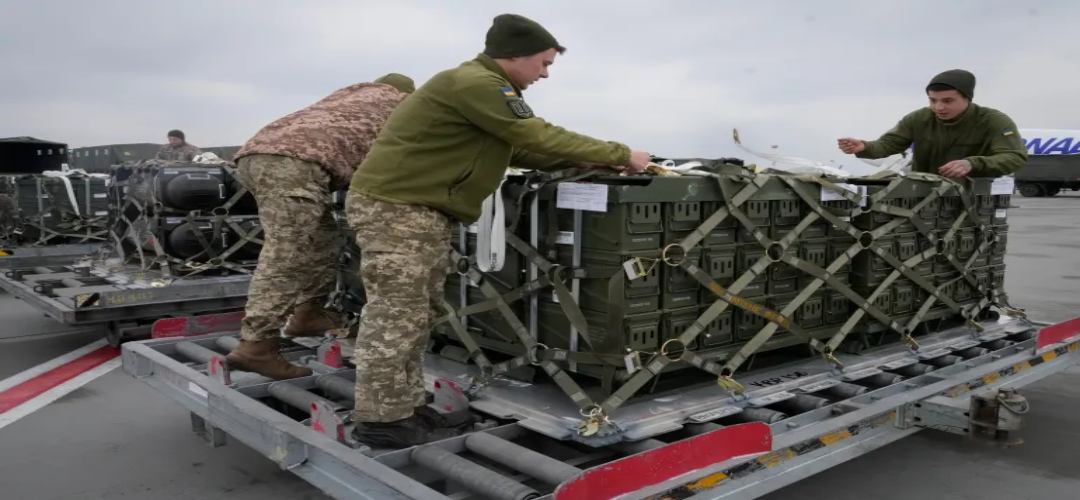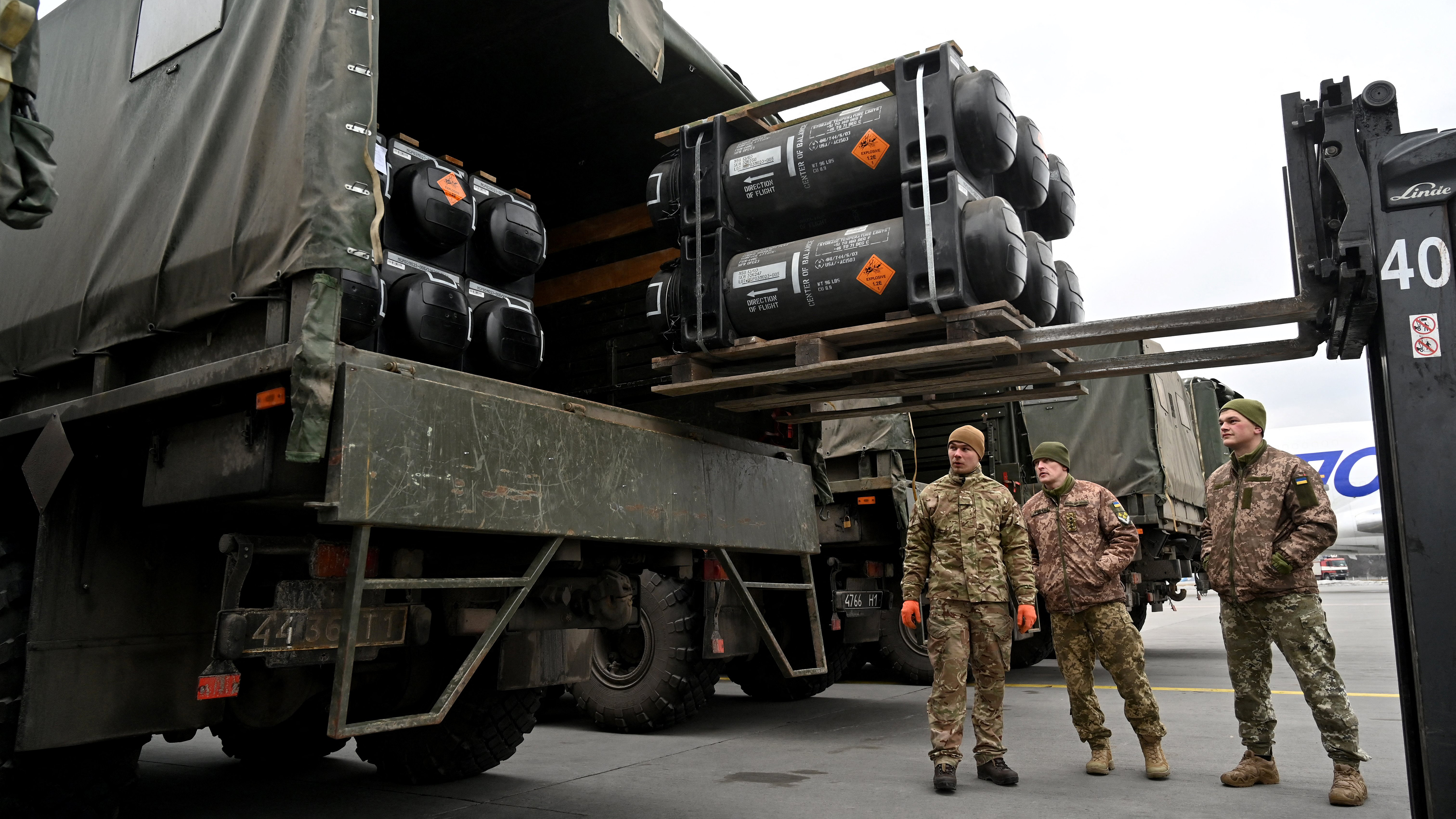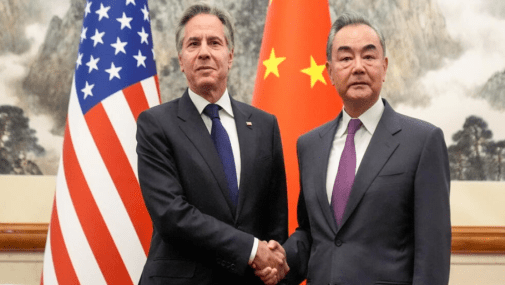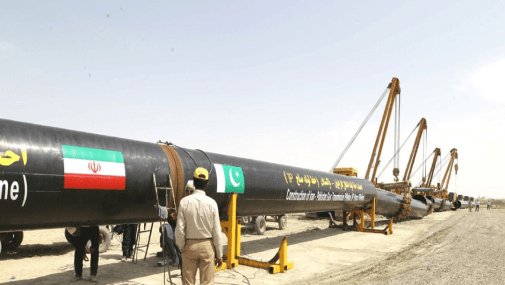Throwing a Lifeline
April 27, 2024 | Expert Insights

In a significant development that underscores the global geopolitical dynamics, the U.S. Congress has recently greenlighted a substantial aid package for Ukraine, amounting to nearly $61 billion. This decision, aimed at proving the necessary impetus to Ukrainian defences against Russian aggression, comes at a critical juncture in the ongoing conflict that has seen Kyiv's forces stretched thin on various fronts.
Background
This package includes a substantial allocation of funds—$23 billion for replenishing Pentagon stocks and $14 billion specifically earmarked for direct military supplies to Ukraine. Additionally, the aid package provides for military training and economic assistance, underscoring the multi-faceted approach the U.S. is taking to support Ukraine's defence and stability.
One of the notable elements of this aid is the inclusion of Advanced Tactical Missile Systems (ATACMS), which are precision-guided ballistic missiles capable of striking targets deep within enemy territory. These weapons are a critical addition to Ukraine's arsenal, allowing for high-impact strikes against key strategic locations. However, their deployment comes with the restriction that they will not be used for strikes inside Russia. This condition highlights the U.S.'s attempt to manage the escalation of the conflict carefully.
The background to this aid package is deeply intertwined with the developments on the ground in Ukraine and the broader geopolitical tensions. Since Russia's full-scale invasion of Ukraine in February 2022, the U.S. has emerged as a principal military backer of Ukraine, providing various forms of aid to help Kyiv resist Moscow's military advances. However, the need for continued and substantial aid became starkly apparent as Russian forces captured strategic locations such as Avdiyivka. This capture not only marked a significant tactical loss for Ukraine but also highlighted the depletion of Ukrainian military resources after prolonged engagements.
The urgency of the situation was compounded by internal debates within the U.S. Congress over the specifics of the aid package, which led to delays in providing essential military support. During this period, Russian forces took advantage of the impasse, intensifying their military operations across eastern and southern Ukraine. The delay in U.S. aid exposed Ukrainian defences and demonstrated the critical dependency of Ukrainian military efforts on external support, especially from key allies like the United States.

Analysis
The strategic impact of the U.S. aid to Ukraine is extensive. An increased supply of arms and ammunition will significantly strengthen Ukraine's military capabilities, equipping it to resist the expected Russian offensive this summer. According to military analysts, this reinforcement should help stabilize the front lines and could enable Ukraine to launch targeted counteroffensives. Such actions aim to halt further territorial losses and cause significant losses among Russian forces, as demonstrated during the intense battle for Avdiyivka.
While the aid is poised to offer immediate improvements in military readiness and capabilities—through the restoration of depleted ammunition, bolstered air defences, and the addition of sophisticated weaponry like ATACMS missiles—the future impact on the overall direction of the conflict remains uncertain. Despite the potential for tactical benefits, experts caution that these measures alone will not decisively alter the war's course. The outcome will rely heavily on sustained international support and the strategic deployment of these newly provided resources, emphasizing that the aid, while crucial, is not an all-encompassing solution to the conflict.
The complexities of modern warfare and the extensive logistical challenges of supplying and maintaining a war effort mean that Ukraine's path to regaining full territorial integrity remains fraught with challenges. Analysts caution against viewing the aid as a silver bullet that will decisively turn the tide of war in Ukraine's favour.
Moreover, the broader geopolitical ramifications of this aid are significant. The passage of the aid bill has reaffirmed U.S. support for Ukraine and signalled to other Western allies the importance of sustained support for Kyiv. European nations, including Denmark, the Netherlands, Norway, and Belgium, have pledged further military support, such as delivering F-16 fighter jets, which could be crucial in countering Russian air threats.
The timing of the aid package is closely linked to U.S. domestic politics, especially with the 2024 presidential election on the horizon. The perspective of potential candidates such as Donald Trump, who has shown scepticism about continuing support for Ukraine, casts a shadow of uncertainty over future U.S. foreign policy. This is a significant concern for Ukraine and its European allies as it could impact the enduring nature of Western support that is essential for Ukraine's ongoing struggle against Russian aggression. Moreover, the aid package has stirred political divisions within the U.S., particularly among Republicans. This polarization could affect the future policy directions and the legislative support for international aid, depending on the electoral outcomes and changes within party alignments, thereby influencing the long-term commitment to Ukraine.
Assessment
- The aid's economic aspects are also crucial. This spending impacts the U.S. economy by influencing defence budget allocations and fiscal priorities. For Ukraine, the package's economic components aim to help stabilize a war-stricken economy, enhancing its government's ability to sustain public services and governance during tumultuous times. This economic stabilization is pivotal, as it underpins the broader societal resilience against the ongoing conflict.
- Strategically, the U.S. and its allies must consider their long-term interests in Eastern Europe. Supporting Ukraine extends beyond countering immediate threats; it is about maintaining regional power balances, deterring future aggression, and upholding international norms. The success of the aid should thus be measured not only by its battlefield impacts but also by how it influences these broader geopolitical goals.
- Additionally, the effectiveness of the military aid hinges on the efficient training and integration of advanced weapon systems into Ukraine's military framework. The challenge lies in quickly and effectively training Ukrainian forces to utilize sophisticated new technologies, a critical logistical endeavour that requires a coordinated international effort.








Comments